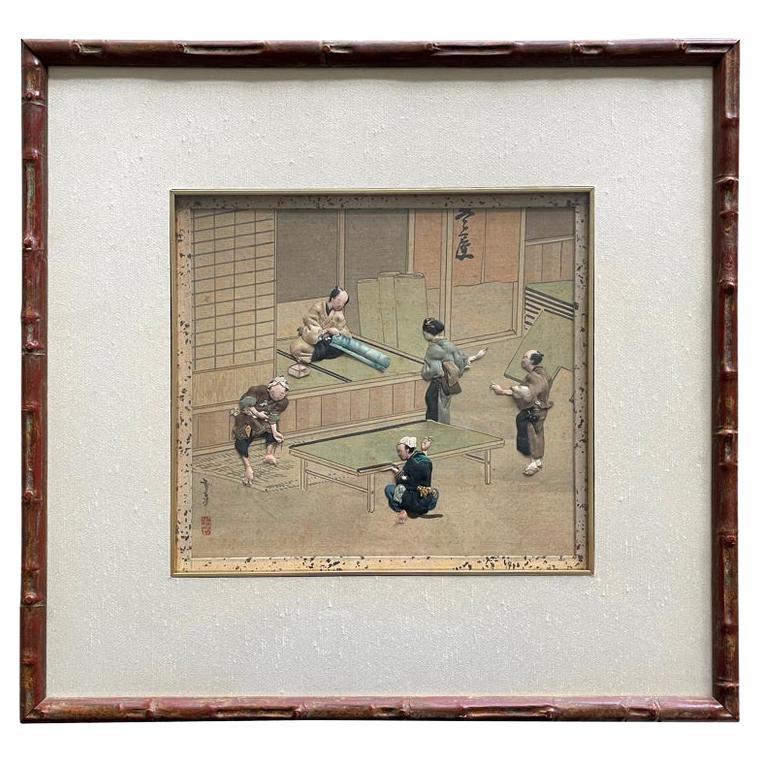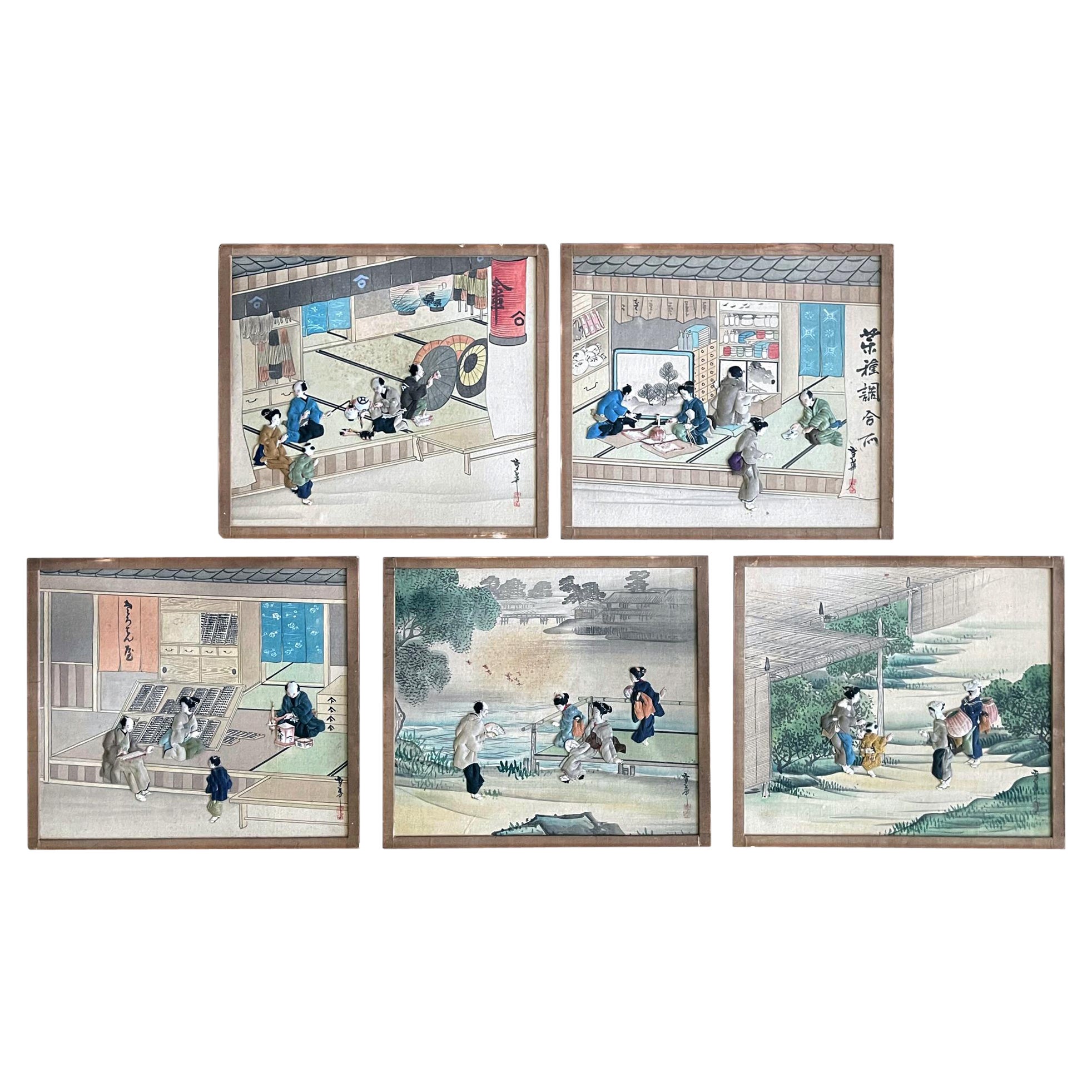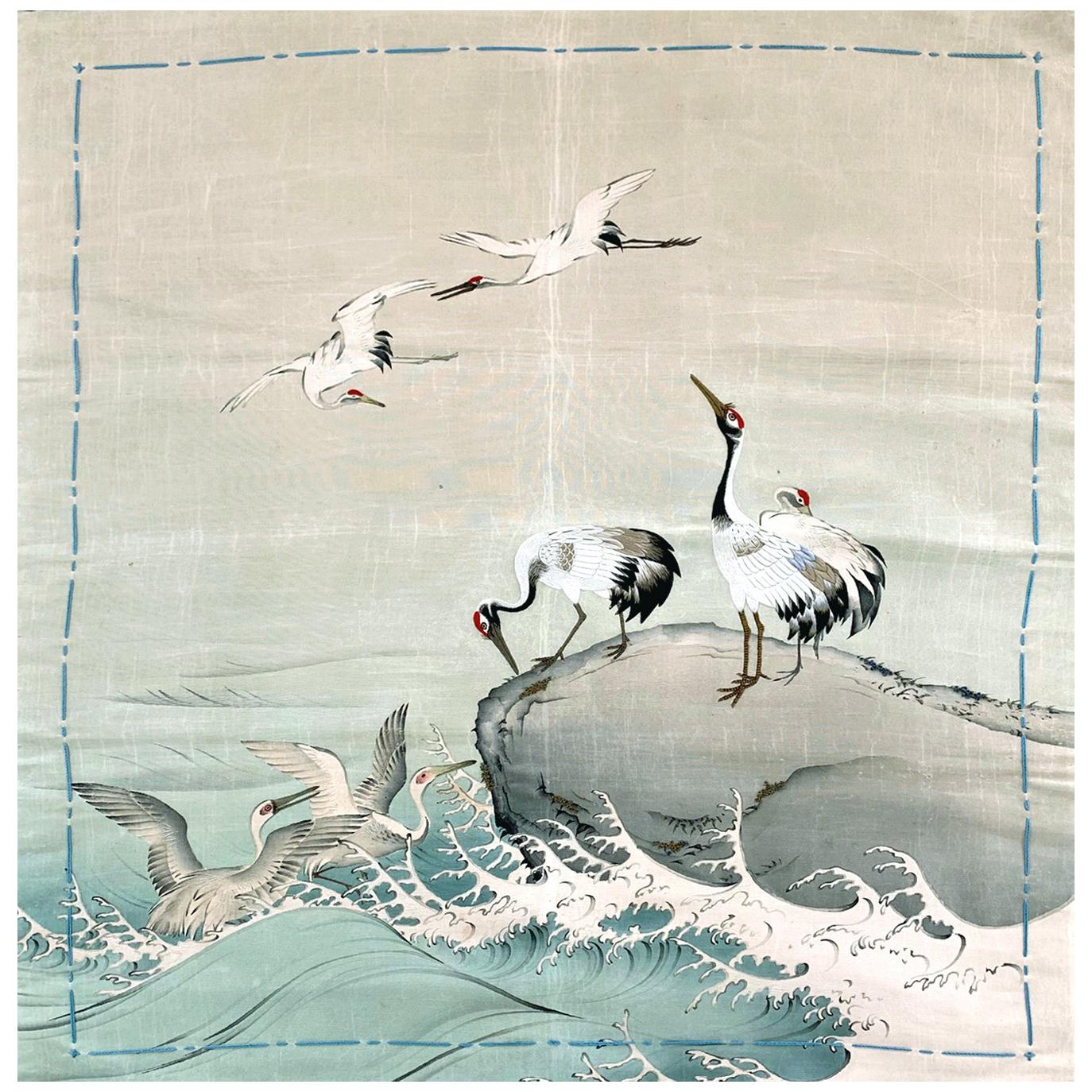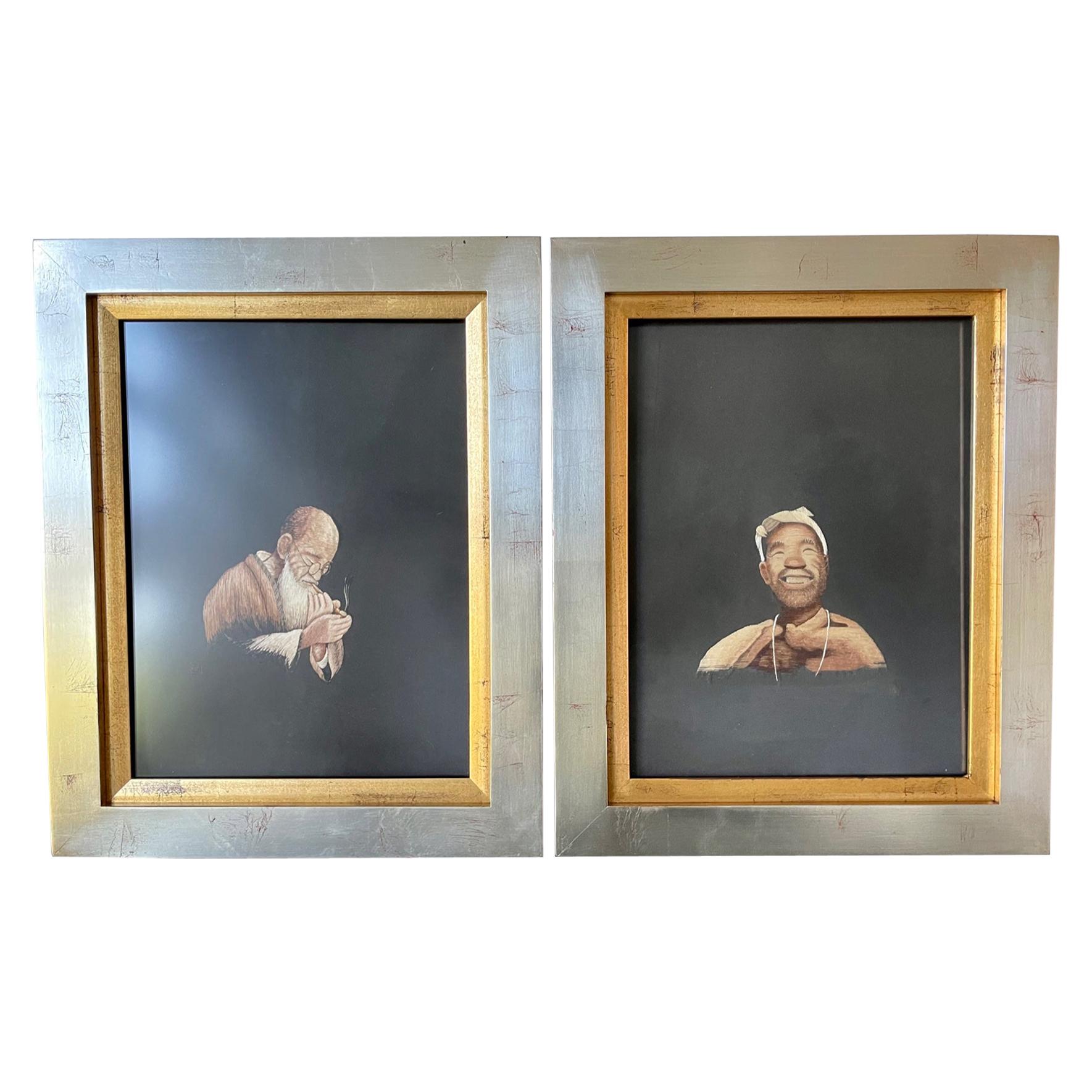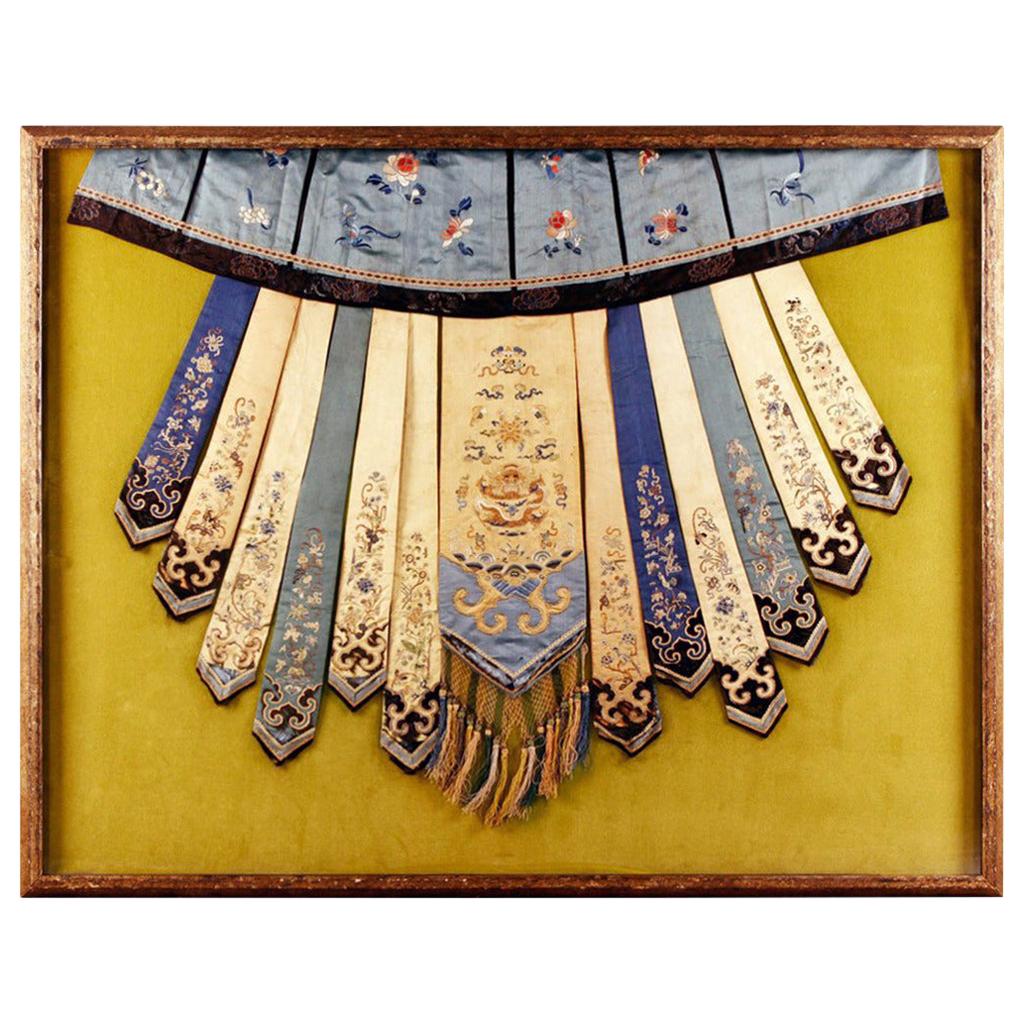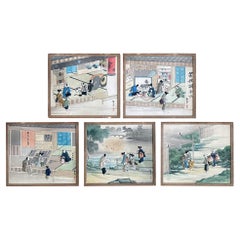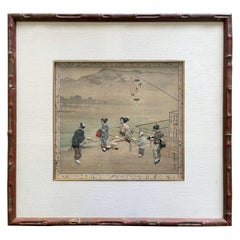
Framed Japanese Oshi-E Textile Art Meiji Period from a Rare Large Set
View Similar Items
Want more images or videos?
Request additional images or videos from the seller
1 of 16
Framed Japanese Oshi-E Textile Art Meiji Period from a Rare Large Set
About the Item
- Dimensions:Height: 18 in (45.72 cm)Width: 19.5 in (49.53 cm)Depth: 0.5 in (1.27 cm)
- Style:Japonisme (Of the Period)
- Materials and Techniques:
- Place of Origin:
- Period:
- Date of Manufacture:1880s-1910s
- Condition:Wear consistent with age and use. Fine condition, not examined out of the frame.
- Seller Location:Atlanta, GA
- Reference Number:1stDibs: LU945023001812
About the Seller
5.0
Platinum Seller
These expertly vetted sellers are 1stDibs' most experienced sellers and are rated highest by our customers.
Established in 2006
1stDibs seller since 2010
479 sales on 1stDibs
More From This SellerView All
- Framed Japanese Oshi-E Textile Art Meiji Period from a Rare Large SetLocated in Atlanta, GAOn offer is the last one of the set of seven framed Japanese textile art called Oshi-E circa Meiji Period (1868-1912). This rare set consists ...Category
Antique 1890s Japanese Japonisme Textiles
MaterialsSilk, Giltwood
- Rare Historical Set Japanese Oshi-E Textile Art Panels Meiji PeriodLocated in Atlanta, GAOn offer here is a rare set of eleven Japanese textile art with painting panels called Oshi-E circa Meiji Period (1868-1912). This unusual set of panels depict various composition of...Category
Antique Late 19th Century Japanese Meiji Textiles
MaterialsSilk, Fabric, Paper
- Collection of Five Japanese Oshi-E Textile Art Panels Meiji PeriodLocated in Atlanta, GAOn offer is a set of five Japanese textile art panels called Oshi-E circa Meiji Period (1868-1912). This usual set of panels depict various aspects of daily life in Edo time with beautiful details. Some of these panels are snapshots of the buzzling commercial activities at the marketplace, providing insight into the signages, architecture, costumes and how people interacted within a historical and pictorial context. Other panels depict daily leisure activities such as lounging in the park or visiting friends. The realistic rendering and attention to details are not short of "photographic" quality. From the signage of the shops to the motions and attires of the individual characters, from the hairstyle, small ornaments, down to the facial expression, were all recorded in great details. Each panel was signed with the artist's name Yukihana in Kanji with a red seal. These panels are unframed and await your custom touch (framing with inner gilt spacer and mat costs about 250-500 depending on the material chosen, see a framed example in the last picture of a single framed panel we have for sale). We offer them for sale individually, but it will be great for a collector to consider the whole set so that they can stay together. The Oshi-E (also known as kiritori zaiku) is a type of ornamental textile art dated back to the Muromachi period (1392-1573). It started among the elite aristocratic women in Kyoto before spreading wider in the Japanese society. Throughout Edo and Meiji period, Oshi-E were sometimes used to make offerings to the altars in the temple and in the late 19th century, it was exported to the west along with the other embroidery textile art. Oshi-E was made by using silk wadding to create a relief design. Various silk fabric swaps and sometimes wires and tassels, often recycled from older kimonos...Category
Antique 1890s Japanese Japonisme Textiles
MaterialsSilk, Giltwood
- Japanese Antique Fukusa Textile Art Meiji PeriodLocated in Atlanta, GAA Japanese silk Fukusa panel circa late 19th-early 20th century of Meiji Period. The front was beautifully decorated with Yuzen-zome, a labor intensive resist-dye technique invested ...Category
Early 20th Century Japanese Japonisme Textiles
MaterialsSilk, Beads
- Japanese Antique Fusuka Textile Art Meiji PeriodLocated in Atlanta, GAA Japanese silk Fukusa panel circa late 19th-early 20th century of Meiji Period. The front was beautifully decorated with Yuzen-zome, a labor intensive resist-dye technique invested by an artist monk Miyazaki Yuzensai (1654 -1736) of Edo period. The auspicious composition features a group of red-crown cranes, the symbol of longevity. Three of them perch on the rock by the ocean (East Sea) an two of them are in flight. Additionally, two egrets frolic in the wave. Yuzen dying was used extensively to showcase the amazing details such as the waves and the gradual coloring effect. Embroidery was used sparsely to highlight areas such as the legs of the crane to render it more dimensional details. The piece has a red silk backing and still retains four blue tassels on corners as well as decorative stitches along the edges. Fukusa is a traditional Japanese textile...Category
Early 20th Century Japanese Japonisme Textiles
MaterialsBrocade, Silk
- Japanese Antique Fukusa Textile Art Meiji PeriodLocated in Atlanta, GAA Japanese silk Fukusa panel circa late 19th-early 20th century of Meiji Period. The front was beautifully decorated with Yuzen-zome, a labor intensive resist-dye technique invested by an artist monk Miyazaki Yuzensai (1654 -1736) of Edo period. The front cover likely depicts a scene from the Tale of Genji, showing a nobleman and his servant pays a visit to a lady in a fenced thatch-roof house under a high peak. The details of blossom trees and pines, as well as the characters, and scenery with a gradual color are astounding. It is telling that the Yuzen dying was used such an mastery. The piece has a red silk backing and still retains two red tassels on the lower corners as well as decorative stitches along the edges. There is a patched design on the back likely a Mon symbol (family crest). Fukusa is a traditional Japanese textile...Category
Early 20th Century Japanese Japonisme Textiles
MaterialsSilk
You May Also Like
- Chinese Dragon, Framed Silk Textile Surcoat EmbroideryLocated in Soquel, CALate 19th century Chinese silk embroidery rank badge textile, with a finely detailed dragon along with other various symbols embro...Category
Antique 1890s Chinese Qing Textiles
MaterialsSilk
$2,120 Sale Price20% Off - Andrianna Shamaris Linen and Cotton Antique Textile from Toraja LandLocated in New York, NYStriking “pelangi” tie-dyed textile from Toraja Land, South Sulawesi. We added a linen border, double backed on both ends. This beautiful panel can be used as a wall hanging, draped ...Category
Mid-20th Century Indonesian Tribal Textiles
MaterialsCotton, Linen
- Andrianna Shamaris Linen and Cotton Antique Textile from Toraja LandLocated in New York, NYStriking "pelangi" tie-dyed textile from Toraja Land, South Sulawesi. We added a linen border, double backed on both ends. This beautiful panel can be used as a wall hanging, draped ...Category
Mid-20th Century Indonesian Tribal Textiles
MaterialsCotton, Linen
- Vintage Kimono Silk Brocade Japanese Ceremonial 1970Located in North Hollywood, CAA vintage Mid-Century ivory color silk brocade collectable Japanese ceremonial kimono. One of a kind. Fabulous museum quality ceremonial kimono in pure silk with intricate detailed h...Category
20th Century Japanese Japonisme Textiles
MaterialsSilk
- Late Meiji Period Sleeping Kimono / Yogi, JapanLocated in Point Richmond, CALate Meiji Period sleeping Kimono / Yogi, Japan Yogi are a type of oversized sleeping kimono traditionally used in Japan. This kimono would have b...Category
Early 20th Century Japanese Tribal Textiles
MaterialsCotton
- Mughal Style Metal Threaded Tapestry Framed from Rajasthan, IndiaBy RajhastaniLocated in North Hollywood, CALarge hand embroidered and quilted textile from North India. Mughal style silk and metal threaded tapestry framed from Rajasthan, India Fanciful Asian folk art design in this disti...Category
20th Century Indian Anglo Raj Textiles
MaterialsCotton
Recently Viewed
View AllMore Ways To Browse
Japanese Kimono Cotton
Large Ikebana Basket
Antique Japanese Tea Ceremony Paintings
Faux Book Bamboo
Japanese Bamboo Lantern
Large Antique Asian Embroidery With People
Womens Gold Bamboo Pen
Kimono Basket
Tofu Japan
Ikebana Book
Japanese Silk Relief Embroidery
Antique Chinese Embroidered Lion Tapestry
Bed Tables Asian Style
Hand Embroidered Silk Suzani Runner
Japanese Kimono Cotton
Iida Shinshichi House
Antique Japanese Obi Belt
Blue Paisley Fix
